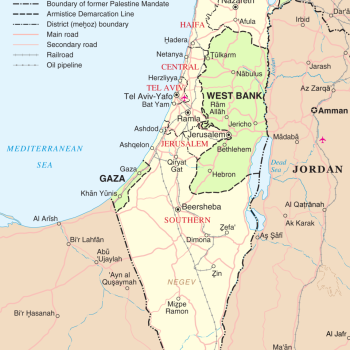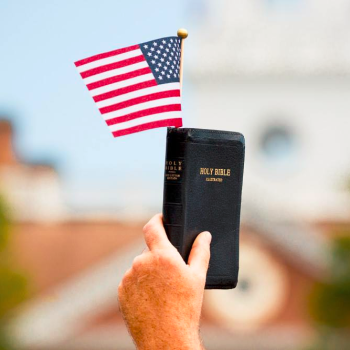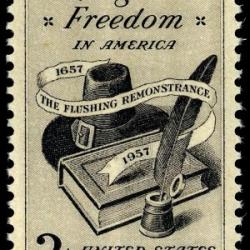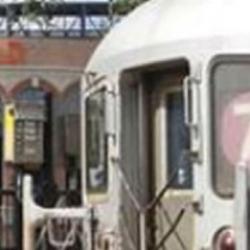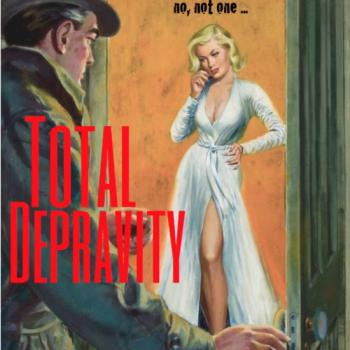Peter Stuyvesant was a champion of religious liberty.
Well, to be more specific, Peter Stuyvesant was a champion of religious liberty for Dutch Reformed Christians.
That doesn’t mean Lutherans, of course. They may be Reformed, theologically speaking, but they weren’t part of Stuyvesant’s Dutch Reformed church, and he regarded them as “heretics and fanatics” who mustn’t be allowed to build churches of their own in New Amsterdam. Stuyvesant allowed them to worship at home with their families, but not to gather together. The Lutheran pastor who arrived in the city in 1657 was ordered banished (he fled to Long Island and ministered as a fugitive for two years before they caught him).
The prohibition against Lutheran worship was defended, in part, by the argument that such restrictions were necessary for such impious residents who, after all, didn’t even go to church.
Yet while Stuyvesant championed religious liberty only for Dutch Reformed Christians, this didn’t mean he championed religious liberty for all Dutch Reformed Christians — only for those who were actually Dutch. Thus Black Dutch Reformed Christians — about a fifth of New Amsterdam’s residents were enslaved Africans — were forbidden from being baptized.
But, still, as long as you were an actually Dutch Dutch Reformed Christian, Peter Stuyvesant strongly supported your religious liberty.
All of which is to say that Peter Stuyvesant did not really believe in “religious liberty” at all, let alone “champion” it. He believed in Dutch Dutch Reformed hegemony, and he was willing to employ the language of “religious liberty” and of “freedom of conscience” to support that. But there’s nothing to suggest he ever understood such language to be anything other than a useful tool to bolster the ethnic and religious hegemony he sought and enforced.
This is true for anyone, not just for 17th-century colonial mini-tyrants. If someone claims to believe in “religious liberty” for me, but not for thee, then they don’t really believe in religious liberty at all.
So it doesn’t matter if Stuyvesant supported “religious liberty” for his own personal sect — the sect of New Amsterdam’s majority and of it’s most financially and politically powerful residents. What matters — all that matters — is whether or not he supported such liberty for those of other sects. Anyone who supports “religious liberty” must support it for religious minorities — for marginal sects who lack the financial, political, and cultural power of the majority.
And if we look at Peter Stuyvesant’s words and actions with regard to the “religious liberty” of minority sects — Lutherans and Anglicans and Baptists and Quakers and Jews — it’s abundantly clear that he was not a champion of religious liberty, but a fierce opponent of it.
Given that dismal history, is this really someone who should be honored with a statue like the one that stands today in Stuyvesant Square Park near the Stuyvesant Town neighborhood of Manhattan?

That’s a good question. But I don’t know that the statue honors Stuyvesant as much as it remembers him, and to truly remember such a man — a slave-trading chauvinist and raging antisemite who imprisoned and tortured his critics — is a very different thing, I think, from honoring him.
I kind of like the Stuyvesant statue. I like that it places the old bigot right there in the heart of the city and forces him to stare at everything that has grown up around the park. There’s St. George’s Episcopal Church, which he would have hated. And the Friends Meeting House and Seminary, and the East End Temple Synagogue, and Beth Israel hospital — all of which would have driven him into a frenzy.
Peter Stuyvesant died in 1672 and is buried beneath St. Mark’s Church in-the-Bowery, just off Stuyvesant Street in Lower Manhattan. The church, regarded as New York City’s oldest in continuous use, stands on the site of a chapel originally built by Stuyvesant himself.
Stuyvesant’s great-grandson sold the site to the Episcopal Church in 1793 and for more than 200 years it has been an East Village landmark and exactly the kind of place that would’ve made old peg-leg Peter howling mad. Kahlil Gibran was an artist in residence there. The church hosted the first performances of plays by Sam Shepard and the founding of the Patti Smith Group. Carl Sandburg and Harry Houdini and William Carlos Williams all taught there. (“We have eaten / the church / that sits atop / your icebox …”) Something about that is truly so sweet and so cold.
Peter Stuyvesant’s last direct descendant was Augustus Van Horn Stuyvesant Jr., who lived off of his family fortune and never worked a day in his 83 years of life. A reclusive eccentric, the last Stuyvesant never married and never socialized. Up until his death in 1953, his only activities seemed to be daily walks through the streets of Manhattan and monthly visits to the family vault beneath St. Mark’s.
I like to think of him as his great-great-(etc.)-grandfather’s ghost, haunting and haunted by the spectacular transformation of the city he fought so hard to keep from being born.




